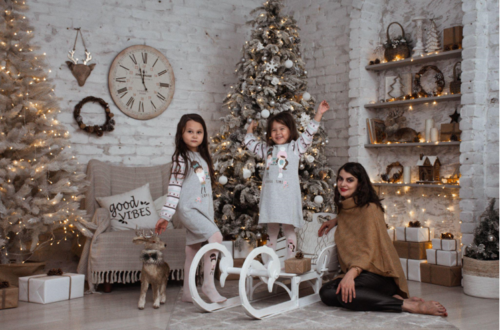
The Evolution of Artificial Christmas Trees in the Modern Era
The Advent of Artificial Christmas Trees in the 20th Century
As early as the 19th century, artificial Christmas trees made of goose feathers were introduced in Germany. However, artificial trees became more popular in the 20th century in America. In the late 1920s, the Addis Brush Company in New Jersey started producing artificial trees made of toilet brushes. These trees, referred to as the “brush trees,” were made of brush bristles and displayed a fuller look than the feather trees.
However, it wasn’t until the 1950s that artificial Christmas trees became more commercialized and widely accessible. Aluminum Christmas trees were introduced, which were shiny and reflective. They were popular among families and considered a symbol of modernity.
The Modern Advancements in Artificial Christmas Trees
Today, artificial Christmas trees have come a long way from their humble beginnings. Manufacturers now produce trees that closely resemble real trees and are often pre-lit with LED lights. There are various sizes, styles, and colors to choose from, catering to different personal preferences.
One of the advantages of using an artificial Christmas tree is that it can be reused for numerous years. While real trees must be disposed of after the holiday season, artificial trees can be stored and used annually, saving money in the long run. Artificial trees are also more environmentally friendly than real trees. Cutting down trees for decoration hurts the environment, but with an artificial tree, this is avoided.
Interestingly, the evolution of artificial trees has grown in tandem with technological advancements. With the rise of cell phones and smart homes, artificial Christmas trees can now be connected to and controlled by devices. Some trees feature LED lights that can be customized and maintained through an app or voice command.
The advancements in the production and design of artificial Christmas trees have made them a top choice for households during the holiday season. Not only are they aesthetically pleasing and customizable, but they also offer practical advantages that real trees cannot. As people become more conscious about the environment and sustainability, it is now more important than ever to consider using artificial trees instead of real ones.
In conclusion, the evolution of artificial Christmas trees is fascinating and reflects the changes in society’s preferences and values. From brush trees to aluminum trees and the modern trees of today, the shift towards more environmentally friendly and technologically advanced options has made artificial trees a top choice for households. As the holiday season approaches, consider investing in an artificial tree and enjoy its advantages over a real one.




